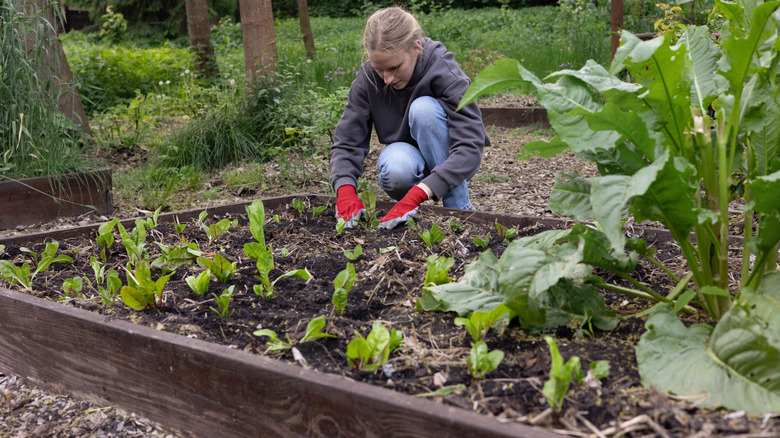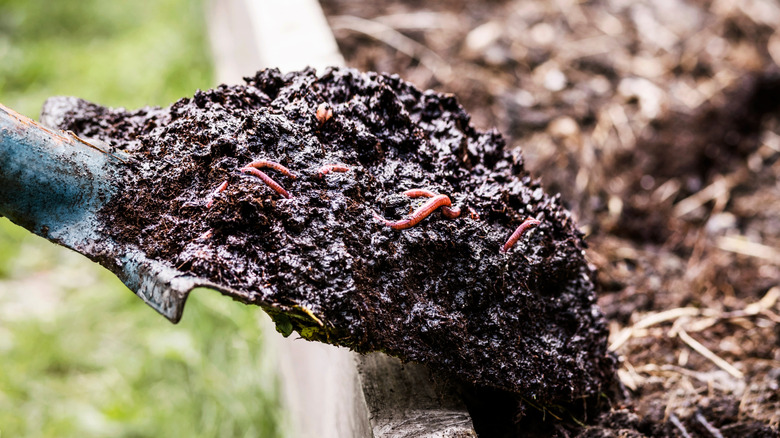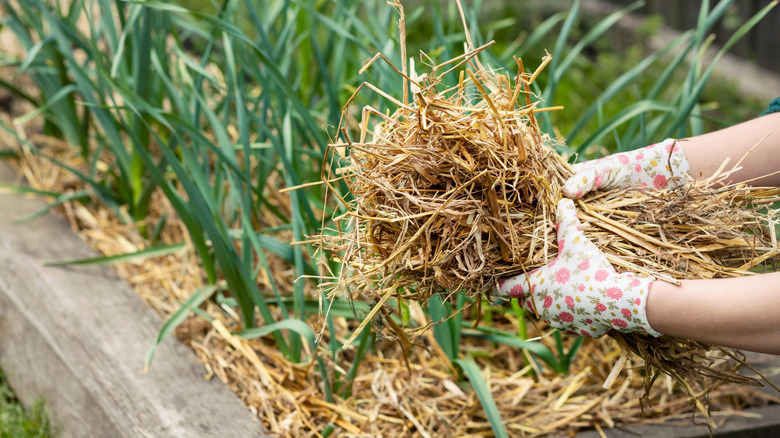Avoid This Popular Method For Healthier Soil In Raised Garden Beds
Starting a raised bed garden is a great way to grow a variety of vegetables, herbs, and even fruit trees in your yard. However, it is easy to get all enthusiastic about the idea of having perfect little boxes of fresh veggies in your garden and forget that it is the soil in the box that makes or breaks your harvest. Garden soil needs to be both nutrient-rich and permeable for edible plants to grow. This is why you shouldn't skimp on the soil when filling a raised garden bed. One of the rookie mistakes a lot of gardeners make is filing up their raised beds completely with topsoil. Although topsoil is rich in nutrients and minerals, it is also a hub of disease-carrying pathogens, fungal spores, and weed seeds. Topsoil also compacts easily and is low on drainage, which further makes it difficult for the tender roots of your vegetables to penetrate the soil and grow.
There are also a bunch of other reasons why just shoving up topsoil from the backyard and dumping it in your raised beds may not be a great idea. First of all, unless you're absolutely sure about the composition of your garden soil, you could just be adding clay-heavy soil to your bed. Months down the line, you'll be wondering why your long-rooted carrots haven't grown too well. Apart from messing up the soil composition, using topsoil from your yard increases the chances of introducing weeds from the soil to your raised beds. In fact, since a lot of pesticides and chemicals find their way to most garden soils, using this soil for growing edible plants can be detrimental to your health as well.
Use a combination of topsoil, compost, and organic matter for raised beds
The best soil for creating healthy garden beds is a combination of top soil, compost, and organic matter. While opinions differ on the exact ratio of these soil types, each of them performs certain functions that are crucial for healthy vegetables. Around 50% of the soil mix needs to be good-quality topsoil that is fertile, weed-free, and well-structured. Before you make a purchase, make sure this topsoil is free of contaminants such as bricks or stones as well. Do not make the purchase based on prices, since a lot of cheap options contain filler materials such as bark or synthetic fertilizers that can damage plants in the long run.
The other half of your soil mix needs to be about 30% compost and 20% organic matter. The primary purpose of having enough compost in the mix is to provide nutrients and improve moisture-holding capacity. Organic matter, on the other hand, adds aeration to the soil and makes it less compact. Grass clippings, composted wood, and leafmould work as excellent organic components in your raised beds, which stimulate root development for healthier plants.
Best practices for maintaining raised garden beds
Your job as a gardener does not stop at creating the best soil mix for the plants to thrive in your raised beds. Since plants grow by taking up nutrients from the soil, you need to make sure that you're replenishing these nutrients as well. You can do this by adding a 1- to 2-inch layer of fresh compost before you plant anything new in your beds. Furthermore, you should also keep the soil permeability constantly in check by adding sand to the mix, whenever you see your plants beginning to rot. This usually happens when plant roots do not find enough air pockets to push through and end up sitting in dense, soggy soil. Adding a layer of bark or perlite is also helpful in keeping the soil airy and improving drainage.
Similarly, at a certain point, your soil could also fall short of the right amount of clay. This will be evident when you begin to see your plants falling over due to lack of support in the soil. This is the time when you need to add more of the topsoil to keep the soil base firm. As a protective measure to maintain the quality of your raised bed, you should also consider adding a 2- to 3-inch layer of mulch to the soil. Mulching helps in keeping soil moisture locked in place and regulating soil temperature. Materials like pine needles and aged sawdust are some of the best ingredients to use in your DIY mulch.


